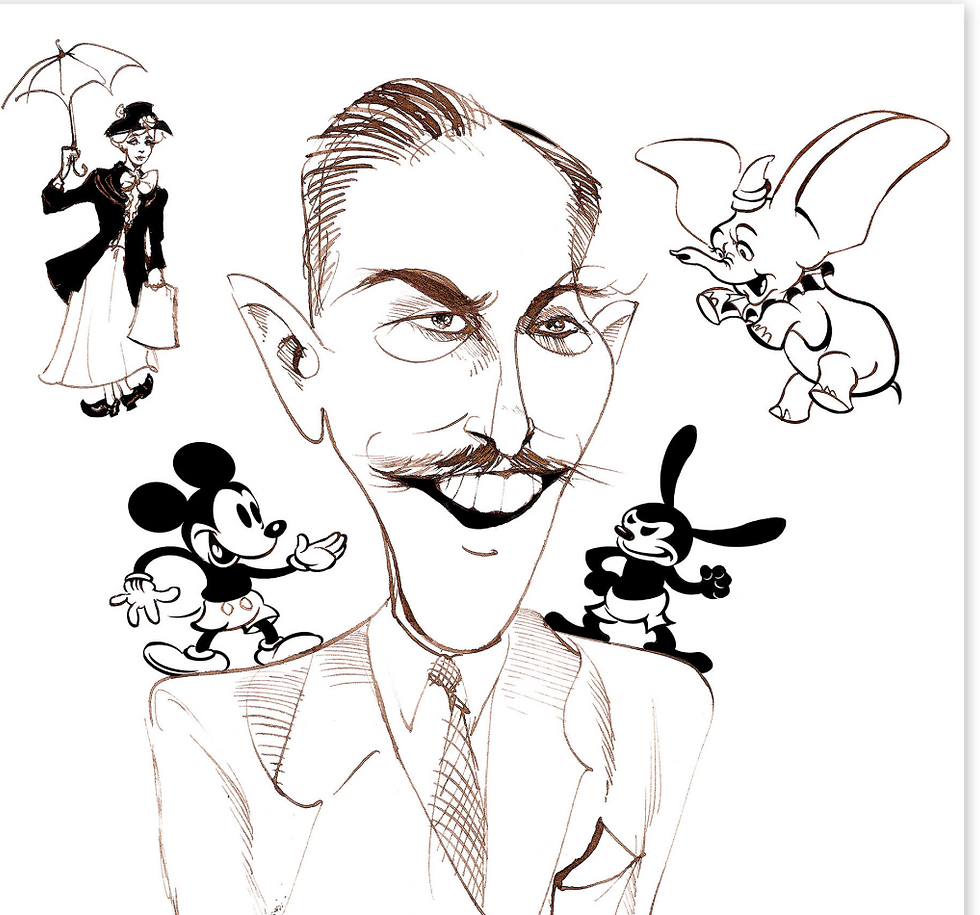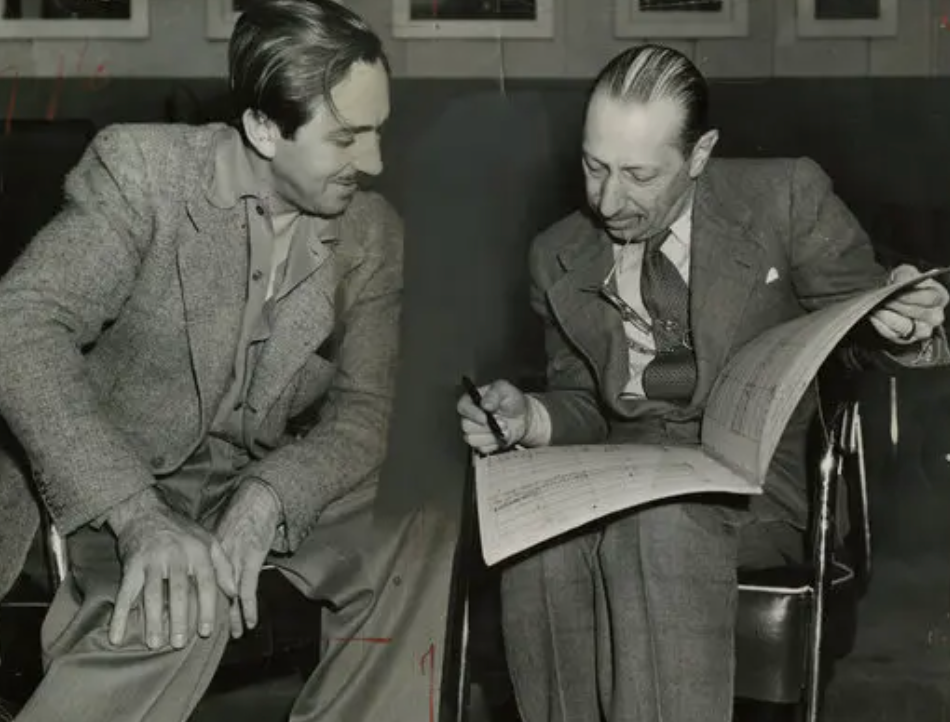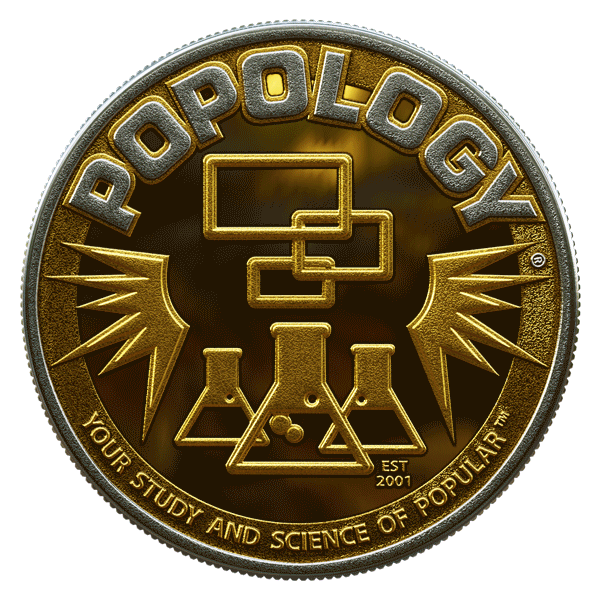Early Life and Beginnings
Walt Elias Disney was born on December 5, 1901, in Chicago, Illinois. Raised in a modest family, Disney's early years were marked by hard work, economic challenges, and a growing love for drawing. His father, Elias, was a stern and often harsh figure, while his mother, Flora, was supportive and nurturing, fueling his early creative inclinations.

Key Early Influences:
Kansas City (1910s): Disney’s family moved to Kansas City when he was a child, and it was here that Walt first explored his artistic interests. He took drawing classes at night and sold sketches to local businesses.
World War I: After high school, Walt tried to enlist in the military but was too young. He finally served as an ambulance driver in France with the Red Cross during World War I, an experience that helped shape his perspective on life.

The Creation of Steamboat Willie (1928)
In 1923, Disney moved to Hollywood with dreams of making it big in animation. His first big success came when he co-founded Disney Brothers Studio, later renamed The Walt Disney Company. However, it was Steamboat Willie (1928) that catapulted Disney into superstardom. This was the first cartoon to feature synchronized sound, and it introduced the world to Mickey Mouse, a character who would become synonymous with Disney.


Key Events Leading to Steamboat Willie:
Disney worked tirelessly to create a new character and animation style that would set him apart from his competitors.
Steamboat Willie featured Mickey Mouse as a mischievous yet lovable character who interacted with his environment and music, breaking new ground in animation.


Moving to Los Angeles and Building Disney Pictures
Walt’s move to Los Angeles in 1923 marked the beginning of what would become one of the most influential entertainment companies in history. In California, Disney worked relentlessly to perfect his animation techniques and build his empire.


Key Milestones:
Disney Brothers Studio (1923): The company began with Walt’s brother Roy and a small staff, creating short films and cartoons that gained a steady following.
Sound and Color Innovations (1920s–1930s): Walt continued to innovate, moving from silent cartoons to the first fully synchronized sound cartoon, Steamboat Willie. Later, Snow White and the Seven Dwarfs (1937) would become the first full-length animated feature film, cementing Disney’s place as a groundbreaking storyteller.


The Creation of Disneyland and the Rise of Theme Parks
Disney’s love for storytelling expanded beyond film, and in 1955, Disneyland opened in Anaheim, California. The park was a revolutionary concept: a place where guests could immerse themselves in stories, characters, and worlds that had previously only been available in movies and books.


Key Innovations:
Theme Park Concept (1955): Disneyland broke the mold of traditional amusement parks, focusing on immersive experiences, themed areas, and clean, family-friendly entertainment.
Walt's Personal Involvement: Walt personally oversaw the construction of the park, ensuring that it would offer something truly unique for all ages.
Impact on Entertainment:
Disneyland became the prototype for all future theme parks, inspiring Disney World in Florida and other international locations.


The Legacy Walt Disney Left Behind
Walt Disney’s impact on entertainment is immeasurable. He not only changed the landscape of animation and film but also revolutionized theme parks, merchandise, and the entertainment industry as a whole.


Key Contributions to Entertainment:
Animation: Disney’s films, such as Pinocchio, Fantasia, Bambi, Cinderella, and Sleeping Beauty, set a standard for animation that would inspire future generations of artists.
Innovations in Film: Disney introduced techniques like Technicolor animation and multi-plane cameras, helping to push the limits of visual storytelling.
Cultural Influence: Mickey Mouse became the face of the brand, but Disney also expanded to include iconic characters like Donald Duck, Goofy, and later, characters from The Lion King, Beauty and the Beast, and Frozen.


Posthumous Growth of the Walt Disney Company
Walt Disney passed away on December 15, 1966, but his company continued to grow and expand far beyond his lifetime. After his death, Disney’s legacy continued to influence generations of filmmakers, artists, and entrepreneurs.


Key Developments After Walt’s Passing:
Walt Disney World (1971): Opened in Florida as the flagship theme park, solidifying Disney as a global powerhouse in tourism and entertainment.
The Rise of Pixar (1990s): Disney’s acquisition of Pixar in the late 1990s marked the beginning of a new era in animation with films like Toy Story, Finding Nemo, and The Incredibles.
The Acquisition of Marvel (2009): The purchase of Marvel Entertainment turned Disney into a major player in the superhero genre, with the creation of the Marvel Cinematic Universe (MCU).
The Purchase of Lucasfilm (2012): Disney acquired George Lucas’ Lucasfilm, gaining the rights to the Star Wars franchise and reviving it with new films, television series, and merchandise.
The Muppets, Star Wars, and More
Walt Disney’s influence stretched beyond his death, but his company’s ability to innovate and expand into new territories furthered his legacy.
Key Acquisitions and Influence:
The Muppets (2004): Disney acquired the Muppets franchise, preserving the beloved characters and introducing them to a new generation.
Star Wars (2012): The acquisition of Lucasfilm brought the Star Wars universe into the Disney fold, leading to the production of new trilogies, spinoffs, and a massive expansion of the brand.
Marvel (2009): The Marvel Cinematic Universe became one of the most successful film franchises in history, all under the Disney umbrella, thanks to their purchase of Marvel Entertainment.
The Legacy of Walt Disney’s Vision
Walt Disney's vision continues to shape the entertainment world today. His dedication to quality, innovation, and storytelling transcends generations and remains integral to the Disney brand.
Who He Spawned:
The Disney Family and Creators: Walt’s family, including his brother Roy, helped maintain the legacy. But other key figures like Frank Wells, Michael Eisner, and Bob Iger carried forward his vision of expanding Disney’s reach into all forms of entertainment.
Influenced Generations of Artists: Filmmakers, animators, and creators from Hayao Miyazaki to Pixar’s John Lasseter have drawn from Disney’s innovative spirit.
Theme Park Innovators: The concept of immersive experiences and themed entertainment created by Disney influenced theme parks globally, including Universal Studios, EPCOT, and others.
Cultural Impact:
Film Industry: Disney redefined animation and filmmaking, leading to the expansion of franchises and cinematic universes.
Theme Parks: The theme park industry grew substantially with Disney’s influence, as immersive, experience-driven entertainment became a global phenomenon.
Merchandising: Disney's approach to brand integration — turning characters and stories into toys, clothing, and experiences — is now a standard business practice in the entertainment industry.
Wish upon a star
Walt Disney was not only a visionary who revolutionized animation and created magical experiences, but he also pioneered an entertainment empire that continues to evolve today. Through his imagination, drive, and leadership, Disney changed how we experience movies, stories, and even vacations. His legacy lives on in the ongoing expansion of The Walt Disney Company, which continues to shape culture, storytelling, and entertainment for new generations across the world.
Walt Disney's legacy left a profound impact on all forms of media and the arts. His innovations, philosophies, and creative vision reshaped the entertainment landscape, leaving a legacy that continues to influence the way stories are told, produced, and experienced across film, television, music, animation, and theme parks. Here’s a breakdown of his lasting influence on media arts:
Innovation in Animation and Film
Synchronized Sound in Animation: With the creation of Steamboat Willie in 1928, Walt Disney pioneered the concept of synchronized sound in animation. This groundbreaking step revolutionized how animated films were made and laid the foundation for modern animated storytelling.
Full-Length Animated Films: Disney’s Snow White and the Seven Dwarfs (1937), the first full-length animated feature, set a precedent for animated films as serious, large-scale productions. This success opened the door for other studios to create feature-length animated films and elevated animation as an art form in its own right.
Technological Innovation: Disney pushed the boundaries of animation and filmmaking technology. The multi-plane camera (used in Snow White and other films) allowed for more depth and dimensionality in animated films. His team also pioneered the use of Technicolor in animation, giving films a vibrant and lasting visual quality that became the standard.
Visually Expansive Worldbuilding: Disney was a master at creating immersive worlds, as seen in his animation films and theme parks. This concept of worldbuilding would later influence filmmakers like George Lucas (Star Wars) and others who focused on creating detailed universes in their films and franchises.
Shaping the Concept of Storytelling
Universal Themes and Family-Friendly Content: Disney's storytelling style emphasized universal themes of love, perseverance, and redemption, making his stories accessible to audiences of all ages. His ability to weave moral lessons into magical tales continues to shape how modern entertainment approaches narratives in films, TV shows, and books.

Character Development and Iconic Characters: Disney’s creations like Mickey Mouse, Donald Duck, and Goofy became symbols of both his studio and broader pop culture. He understood the importance of creating relatable, memorable characters that could transcend their medium, a philosophy that has influenced characters in various other films, video games, and even brands.

Music Integration: Disney revolutionized the integration of music into film, ensuring that songs weren't just add-ons but essential to the plot and emotion of the story. This set the standard for musicals and helped elevate films like The Lion King and Frozen, where songs become central to the narrative and its cultural impact.

3. The Rise of the Entertainment Empire
Branding and Merchandising: Walt Disney’s ability to turn characters and films into global brands through merchandising was groundbreaking. From Mickey Mouse ears to action figures and theme park attractions, Disney redefined how media properties could be expanded into a multi-billion-dollar merchandising machine. This strategy is now common across the entertainment industry, with franchises like Marvel, Star Wars, and Harry Potter following in Disney’s footsteps.
The Theme Park Model: Walt’s creation of Disneyland in 1955 redefined what entertainment could be. Theme parks were no longer just a place for rides but immersive environments that allowed people to live out their favorite stories. This concept of themed, immersive environments has been expanded upon by other companies, including Universal Studios and Warner Bros., changing the nature of live entertainment worldwide.
Franchise Development and Cross-Media Expansion: Disney’s method of expanding film stories into TV shows, merchandise, books, and theme park attractions laid the groundwork for modern franchise-building. Today, this model is ubiquitous, with franchises like the Marvel Cinematic Universe (MCU), Harry Potter, Star Wars, and others making significant cross-media expansions.

Cultural Impact and Inclusivity
Global Reach: Disney understood the importance of creating stories that could transcend national boundaries. His films have been enjoyed globally, making Disney characters and stories part of world culture. Films like The Lion King and Frozen resonate with people across cultures, and Disney’s ability to create universally beloved content has influenced other entertainment companies to follow suit.

Diversity and Inclusion (Modern Era): While Walt’s era was marked by some cultural and racial stereotypes in early films, the Disney company’s later efforts—such as the introduction of Mulan, Pocahontas, The Princess and the Frog, and Moana—have made significant strides in diversifying storytelling. Modern Disney has become a leading force for diverse representation in media, which has influenced the entertainment industry's broader approach to inclusivity.

5. Influence on Other Creators and Studios
A New Wave of Animation Studios: Disney's success with animation and storytelling created the template for other animation studios, including Warner Bros. Animation, Pixar, DreamWorks, and Nickelodeon, among others. His influence is most strongly seen in Pixar, which was founded by former Disney employees and followed Disney’s innovative, heartwarming storytelling techniques.
Influence on Filmmakers: Many of Hollywood's top directors, from Steven Spielberg to George Lucas to Tim Burton, have cited Walt Disney as a major influence on their work. Disney's ability to blend fantasy with reality, create expansive worlds, and develop character-driven narratives has become the benchmark for filmmakers across genres, especially in creating immersive blockbuster franchises.
6. Impact on Pop Culture and Society
Psychological and Emotional Engagement: Walt Disney created a style of entertainment that not only entertained but also emotionally engaged audiences. His commitment to creating emotionally resonant stories has influenced not just animation but the entire entertainment landscape, where filmmakers aim to evoke emotional responses from their audiences.
Shaping the Modern Family Entertainment Model: Walt Disney’s focus on creating films and experiences for the whole family laid the foundation for the modern family-friendly entertainment model. The entire genre of animated films and family-centered TV shows owes a great deal to Disney's vision of creating accessible yet meaningful entertainment.
Expanding the Definition of ‘Entertainment’: Disney expanded the very definition of entertainment by integrating different forms—animation, live-action, music, theater, theme parks, and more. This holistic approach to entertainment has become standard practice for major entertainment conglomerates like Warner Bros., Sony, and Universal, as well as streaming platforms like Netflix.
Walt Disney's Enduring Legacy
Walt Disney’s legacy is a cornerstone of the modern entertainment industry. He revolutionized animation, established new standards for storytelling, pioneered new business models, and created an entertainment empire that continues to influence media and culture globally.

His innovations in character development, the use of music, immersive experiences, and global brand-building have shaped the way media is consumed today, from films to TV shows to theme parks. Disney's influence can be seen in every corner of the entertainment industry, with his commitment to imagination, innovation, and storytelling shaping the world of media arts for generations.


Comments